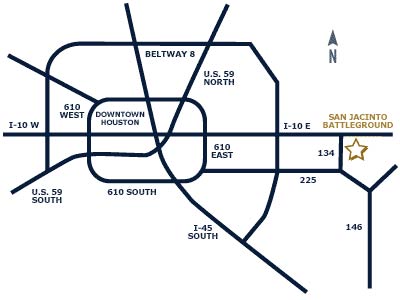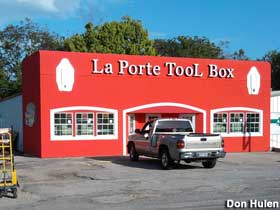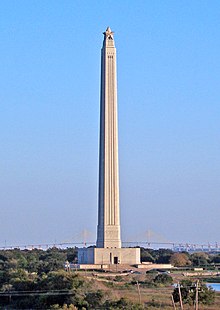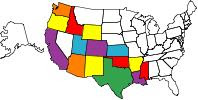For “Travel Tuesday”: Let’s visit the San Jacinto Monument, and Battleship TEXAS which is in the Texas Gulf Coast Region.
“ Home to some of the best beaches in America, the Texas Gulf Coast region draws millions of visitors to this Texas playground. Stretching some 350 miles from South Padre Island & the Rio Grande Valley, all the way to Beaumont & the Louisiana border, this region is renowned for its wildlife & natural beauty, as well as the home of America's space program. Discover the Beaches of the Texas Gulf Coast Region.”
Home to some of the best beaches in America, the Texas Gulf Coast region draws millions of visitors to this Texas playground. Stretching some 350 miles from South Padre Island & the Rio Grande Valley, all the way to Beaumont & the Louisiana border, this region is renowned for its wildlife & natural beauty, as well as the home of America's space program. Discover the Beaches of the Texas Gulf Coast Region.”

Located on the Houston Ship Channel in Harris County, Texas, United States, near the city of La Porte.
_______
San Jacinto Festival, Battle Re-enactment Set for April 20
Event to Mark 177th Anniversary of Texas Independence

“Hundreds of history re-enactors will recreate the events leading up to the Battle of San Jacinto that won Texas its independence with booming cannons, cracking musket fire, thundering hooves and battle cries at San Jacinto Battleground State Historic Site on Saturday, April 20, 2013.
The dramatic battle re-enactment takes place at 3 p.m. Saturday and serves as the centerpiece of the admission-free San Jacinto Day Festival, being held from 10 a.m. to 6 p.m. on the grounds surrounding the San Jacinto Monument. Sponsored by the San Jacinto Museum of History, Texas Parks & Wildlife and the San Jacinto Volunteers, the festival is a full day of music, entertainment, food, games and fun set amidst living history.
The battle re-enactment, the largest in the state, is presented by hundreds of members of the San Jacinto Volunteers and other living history organizations from across the state. It dramatizes the decisive battle in which Gen. Sam Houston led his Texian soldiers to victory over the Mexican Army to form an independent Republic of Texas, eventually leading to Texas statehood and almost one million square miles of Mexican territory becoming a part of the United States. The re-enactors will dramatically interpret the Runaway Scrape (Texians fleeing from the advancing forces of Santa Anna), the cannon duel and the final battle between the two forces.” More at: http://www.tpwd.state.tx.us/newsmedia/releases/?req=20130408a
and: http://www.tpwd.state.tx.us/state-parks/san-jacinto-battleground
______
Welcome Aboard the Battleship TEXAS!

“The Texas Parks and Wildlife Department's 1,200-acre San Jacinto Battleground State Historic Site consists of the San Jacinto Battleground, Monument and Battleship TEXAS. These sites are located within minutes of downtown Houston and a short distance from the beaches of Galveston Island. Millions of visitors come to this area each year to enjoy the mild coastal climate and cultural and sports activities. Visitors experience history first-hand through living history at the San Jacinto Battleground and Battleship TEXAS.
In 1948, the Battleship TEXAS became the first battleship memorial museum in the United States. That same year, on the anniversary of Texas Independence, the TEXAS was presented to the State of Texas and commissioned as the flagship of the Texas Navy. In 1983, the TEXAS was placed under the stewardship of the Texas Parks and Wildlife Department and is permanently anchored on the Buffalo Bayou and the busy Houston Ship Channel.
Things to Do
The Battleship TEXAS program provides many recreational and educational experiences for visitors and organized youth groups, as well as numerous programs for students of all ages, self-guided tours of the Battleship and Battleground, confined space rescue training, and internships. Learn more about Battleship TEXAS programs and tours.
Marsh Restoration and Boardwalk
From the1,210-foot long marsh trail and boardwalk you can view the native prairie, tidal marsh and bottomland forest as it appeared at the time of the historic 1836 Battle of San Jacinto. Read the Marsh Interpretive Trail Guide: "Habitats of the Upper Texas Coast."” More at: http://www.tpwd.state.tx.us/state-parks/battleship-texas
------
Battleship TEXAS.
“The Battleship Texas is the last dreadnought in existence in the world, a veteran of Vera Cruz (1914) and both World Wars, and is credited with the introduction and innovation of advances in gunnery, aviation and radar. Having been designed in the first decade of the 20th century (keel laid in 1911 and completed in 1914), and having seen action in some of the most intense and critical campaigns of WWII, she is an important piece of our naval and maritime history. The Battleship Texas was de-commissioned in 1948.”
______
San Jacinto Monument
“The San Jacinto Monument is a 567.31-foot (172.92 m) high column located on the Houston Ship Channel in Harris County, Texas, United States, near the city of La Porte. The monument is topped with a 220-ton star that commemorates the site of the Battle of San Jacinto, the decisive battle of the Texas Revolution.
The monument, constructed between 1936 and 1939 and dedicated on April 21, 1939, is the world's tallest monumental column and is part of the San Jacinto Battleground State Historic Site.
By comparison, the Washington Monument is 555.427 feet (169.294 m) tall. The column is an octagonal shaft faced with Texas Cordova shellstone, topped with a 34-foot (10 m) Lone Star – the symbol of Texas. Visitors can take an elevator to the monument's observation deck for a view of Houston and USS TEXAS.
The San Jacinto Museum of History is located inside the base of the monument, and focuses on the history of the Battle of San Jacinto and Texas culture and heritage.
The San Jacinto Battlefield, of which the monument is a part, was designated a National Historic Landmark on December 19, 1960, and is therefore also automatically listed on the National Register of Historic Places. It was designated a Historic Civil Engineering Landmark in 1992.” More at: http://en.wikipedia.org/wiki/San_Jacinto_Monument
--------
Construction of the Monument
 “The monument weighs 70,300,000 pounds. It is 125 feet square at the base, tapering to 30 feet square at the top. It is faced with blocks of cordova shell stone weighing 500 pounds apiece. This shell stone is over 100 million years old and was quarried from Burnet County north of Austin. The shaft walls are 4 feet thick at the base of the monument and 2 feet thick at the top.” More at: http://www.tpwd.state.tx.us/state-parks/san-jacinto-battleground/san-jacinto-battleground-state-historic-site-monument
“The monument weighs 70,300,000 pounds. It is 125 feet square at the base, tapering to 30 feet square at the top. It is faced with blocks of cordova shell stone weighing 500 pounds apiece. This shell stone is over 100 million years old and was quarried from Burnet County north of Austin. The shaft walls are 4 feet thick at the base of the monument and 2 feet thick at the top.” More at: http://www.tpwd.state.tx.us/state-parks/san-jacinto-battleground/san-jacinto-battleground-state-historic-site-monument
_______
La Porte, Texas - Tool Box-shaped Building
“New in 2011: a building that may be the world's largest tool  box. It started life as Ice House. In 1950s and '60s Texas, an ice house was a local watering hole. No A/C, just an attic fan covered with chicken wire, sometimes a pool table or shuffleboard to keep the children occupied while the "parents" discussed the day's events over beers. The beer was served in cans punctured with a short-handled device and wrapped in paper, commonly called a diaper. Bottle beer was served similarly. The building had garage doors and was open to the elements and insects. Seating was usually tables and chairs or picnic tables, and there always a bar. The only ice in the ice house was in a cup. Hard liquor could not be sold, but you could bring your own and buy setups or ice.
box. It started life as Ice House. In 1950s and '60s Texas, an ice house was a local watering hole. No A/C, just an attic fan covered with chicken wire, sometimes a pool table or shuffleboard to keep the children occupied while the "parents" discussed the day's events over beers. The beer was served in cans punctured with a short-handled device and wrapped in paper, commonly called a diaper. Bottle beer was served similarly. The building had garage doors and was open to the elements and insects. Seating was usually tables and chairs or picnic tables, and there always a bar. The only ice in the ice house was in a cup. Hard liquor could not be sold, but you could bring your own and buy setups or ice.
After a 40 year career as an ice house, it was turned into a resale shop called Mantiques, mostly men stuff. "Women Not Allowed" sign had small print adding "on the roof without a parachute," but few women bothered to read the fine print and would not come in. The sign was eventually removed.
The building was then renamed Real Cheap Tools and other good stuff for the last 10 years. Then it was changed to "La Porte Tool Box" with a new facade.” From: http://www.roadsideamerica.com/
______
Lynchburg Ferry near the San Jacinto Monument

“The Lynchburg Ferry is a free ferry in Texas and is operated by Harris County. Nathaniel Lynch started the ferry in 1822. It operates on the Houston Ship Channel (Buffalo Bayou) between the community of Lynchburg on the north and the San Jacinto State Park on the south. In 1836 wounded soldiers at the Battle of San Jacinto were carried aboard the ferry across Buffalo Bayou and up to Lynchburg.
This historic ferry played a vital role in Texas' fight for independence in 1836 and is the oldest operating ferry in Texas. It provides views of the Fred Hartman Bridge while taking a brief, leisurely ferry ride across the San Jacinto River to visit the Battleship Texas, the San Jacinto Monument and Monument Inn. Runs seven days a week. Free.”
LYNCH'S FERRY
”A pioneer ferry of Texas under Mexico and the Republic, established at the confluence of Buffalo Bayou and the San Jacinto River, 1822, by Nathanial Lynch, one of Stephen F. Austin's "Old Three Hundred Colonists". Usual charges at ferries like this were man and horse, 25 cents, cattle 4 cents a head, but rates could be raised for risky high-water service.
Lynch, from Missouri, was an active Texas merchant and judge. After a small settlement grew up near the ferry, he platted the town of "Lynchburg" about 1835, but few shared his enthusiasm for the spot.
In March and April, 1836, as Texan settlers fled the Mexican Army during the War for Independence, hundreds cross the San Jacinto at Lynch's ferry. By April 2, the prairie was covered with wagons, horses, mules, tents, and baggage, but 19 days later at the Battle of San Jacinto, the Mexican General Santa Anna, hoping to cut off a Texan retreat at the ferry, was himself defeated near the site.
In later years, Lynchburg became a steamboat stop for the picturesque stern-wheelers plying Buffalo Bayou as eastbound freight was transferred there.
Today the modern motor-driven Lynchburg ferry is operated at the site of the original ferry.”
______
On This Day:
Union ships pass Vicksburg, Apr 16, 1863:
“Union Admiral David Dixon Porter leads 12 ships past the heavy barrage of Confederate artillery at Vicksburg, Mississippi. He lost only one ship, and the operation speeded General Ulysses S. Grant's movement against Vicksburg.
Grant had been trying to capture Vicksburg for six months. A first attempt failed when General William T. Sherman's troops were unsuccessful in attacking Vicksburg from the north. Grant now planned to move his army down the opposite bank of the river, cross back to Mississippi, and approach the city from the east. The soggy spring conditions slowed his advance to a crawl as his force had to build bridges over the bayous on the Louisiana side of the river. To speed the operation, Grant called on Porter to take the ships loaded with men and supplies and run past the powerful Vicksburg batteries.
The flotilla quietly moved down the river on the dark night of April 16. The exhausts on the steamboats were vented into the paddle wheel housing to muffle the noise. The boats were positioned off center so that if a ship were hit, the following craft could pass safely. The ships were stacked with cotton bales to act as a soft armor in the event of a direct hit. Confederate pickets spotted the flotilla and sent word to the batteries, and the bombardment began. The commanding Confederate, General John Pemberton, was attending a ball and was quickly summoned to the scene. Some Rebel soldiers even rowed across the Mississippi River to set fire to the trees on the western bank and provide backlighting for their gunners on the eastern shore.
It took over two hours for the ships and attached barges to pass. The Union lost only one ship and two barges, and Grant's plan proceeded. Within six weeks, he had locked up Vicksburg from the east and the siege began. Vicksburg would surrender on July 4, 1863.”
______
Texas City explodes. Apr 16, 1947:
“A giant explosion occurs during the loading of fertilizer onto the freighter Grandcamp at a pier in Texas City, Texas, on this day in 1947. Nearly 600 people lost their lives and thousands were injured when the ship was literally blown to bits.
Ammonium nitrate was used as an explosive by the U.S. Army in World War II and, after the war ended, production of the chemical continued as its use as a fertilizer became accepted. However, the precautions used in its transport became far more lax in the post-war years.
By 9 a.m., flames had erupted from the hold and within minutes it exploded. The blast was heard 150 miles away and was so powerful that the ship's 1.5- ton anchor was found two miles away. The force of the explosion lifted another ship right out of the water. People working at the docks were killed instantly.
Some water and an extinguisher were used to fight the fire, but hoses were not employed for fear of ruining the cargo; there were already 2,300 tons loaded on the ship. While the ammunition was removed from the ship, the crew attempted to restrict oxygen to the hold in hopes of putting out the fire. Apparently they did not realize that because of ammonium nitrate's chemical composition, it does not require oxygen in order to burn. Some eyewitnesses said the scene was worse than anything they had seen in Europe during World War II. The Grandcamp explosion was the most devastating industrial accident in U.S. history.
Wood-frame houses in the city were flattened, additional blasts were triggered at nearby chemical plants, and fires broke out across the city. The mushroom cloud from the blast rose 2,000 feet, and fragments of the Grandcamp were hurled thousands of feet into the air, landing on buildings and people. The ship's anchor, weighing 1.5 tons, was flung two miles and embedded 10 feet into the ground at the Pan American refinery. The explosion was heard as far as 150 miles away.
Pieces of flaming debris damaged the oil refineries in the area. A nearby Monsanto chemical storage facility also exploded, killing 234 of the 574 workers there. Nearly all of the survivors were seriously injured. A residential area of 500 homes was also leveled by the blast. Another ship, the High Flyer, which was carrying similar cargo, was pushed completely across the harbor. The crew fled when it came to rest, failing to notice that a fire had started and the next day their ship also exploded. Two people died.
In all, 581 people died and 3,500 were injured. The explosion caused $100 million in damages. A long-disputed court case over the cause of the blast was resolved when Congress granted compensation to 1,394 victims. They received a total of $17 million in 1955. The port was rebuilt to handle oil products only.”
______
Yesterday:
Ray as going to be busy in the morning, so I thought I had better go shopping in the next town. It has been warmer, so I left the AC on for Misty.
When I went down to Sam’s to give Mikey his pills, Sam’s SUV wasn’t there. I thought maybe he had taken Mikey down to the lake, but they weren’t there either. That worried me, as I know that Sam couldn’t get his license back after his stroke. But I trolled Willis Kroger’s parking lot to see if his SUV was there, but it wasn’t.
So I went on into town, and returned the useless metal detector, and exchanged a can opener that I had bought, which left sharp edges. I am used to the safety ones that just un-stick cans around the rim, and leave no sharp edges on the lids.
My main purpose was to go to the appraisal district, and ask them to tell me exactly how wide the front of my Lot 2 is. There is a big blur right over the Lot 1 measurement on my map of the subdivision, and it was even worse on their copy. They referred me to the County Court Records, and the blur is on their map, too. So I still don’t know.
At my stop at Krogers in Conroe, I came across a great bargain in the meat dept. They had range-fed, no added chemicals or hormones, ground buffalo in 1lb packages for $5.00 a lb, normally $10. I bought all they had. Organic meat is more filling, so you don’t eat as much, so each pound will last me a few days. I will freeze part of each meal as I cook it, so I can have some later. Always handy to have some pre-cooked dinners for busy days, or even to take in the RV. Misty gets a little raw ground meat with her dog food most days, too. I am glad I put the meat in my little 12v. fridge in the van, as there was a several mile tie up on the I-45 on the way home. One of those ‘creep-for-a-few-feet-and-then-stop’ traffic jams. It took me ages-to get home.
Before I even stopped at my house, I went to Sam’s to give Mikey his pills, as it was already lunch time. Sam had gone grocery shopping in the morning, and a neighbor drove his SUV for him. Mikey has a very skillful tongue and even I have trouble getting his pills down him to stay. Then he gets some canned food, so he likes that, as Sam has always fed him dry food. Mikey is still bloated, but doesn’t so cough much now.
When I arrived home, and had put the groceries away, I read an email from Kenya, my SPCA boss. She sent me pictures of two girl kitties that she will have their foster moms bring to Adoption Day on Saturday, for me to meet. They both have one blue and one green eye.
Gumdrop on left
Simone on right.
Simone is partially deaf, so I will probably chose her. She looks so much like my late white cat, Honky, and he was a sweetie. I found him starving when he had been dumped in the woods, and once he trusted me, we were inseparable. I am so excited!
In the afternoon, I picked up the twigs and pine cones off the lots to make them ready for Ray to mow. The mower hadn’t been started since last year. Just to see if it would start, I pumped it 9 times, pulled the cord, and it fired right up. Ray did all he could until it ran out of gas, so I will have to fill the gas cans today.

















2 comments:
I hope Simone turns out to be a match for you!
Hi Sandra, Thank you for your comment.
I am going to meet her on Friday, so we will see.
After what I have been through, I just want a healthy cat! She is from our SPCA, so I know she has been all checked out.
Happy Trails, Penny
Post a Comment